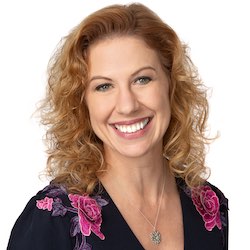9 minutes
How credit unions can help their female members achieve their financial goals and dreams
I like the color pink, actually quite a lot. And I will freely admit that I have owned (and in some cases still do) and used pink tools, pink camo and pink golf accessories. The idea of using the color pink to target-market to women is not new and likely has some merit, but it’s time that credit unions dig deeper than just the surface color. CUs need to look at the full picture of whether they can meet women’s needs and, perhaps more importantly, help women achieve their financial goals and dreams.
Pay Gap Shapes Women’s Financial Lives
The gender gap extends far beyond pay. According to a Money magazine article, a 21-cent per hour wage gap between men and women leads to gaps in debt, savings and retirement planning. It is estimated that over the course of a woman’s career, they are missing out on $500,000 in salary compared to their male counterparts. To simply earn the same amount of money as their male colleagues, the average woman would have to work 11 years longer.
According to the same article, women also pay more for the debt they carry, despite research that finds women are less likely to default. With lending rates influenced by income, women tend to have higher loan-to-value ratios on their mortgages and pay half a point higher annually on their credit cards. Women also hold 65% of all student debt.
More debt and higher costs feed a savings and retirement gap as women retire with two-thirds the money of men while living longer. A T. Rowe Price survey found that women are less likely than men to participate in their workplace 401(k) plans, and those who do tend to save less than their male colleagues. The average woman’s 401(k) balance among those surveyed was $38,000, while the average man’s was $74,000. Women contributed an average of 7.2% of their annual salary to these retirement plans, compared to men at 8.4%. Make no mistake, the gap is real and has multiple interrelated impacts on women’s financial lives.
Women as Economic Drivers
Despite the gap, women are true financial drivers, and this is relevant to CUs for two reasons: First, women make the majority of financial decisions in their households. Second, women are highly represented in consumer spending, education and the transfer of wealth.
Research from Kantar, Winning Over Women, finds that in the U.S. alone, 126 million adult women control 51% of personal wealth and drive 80% of consumer spending with a combination of buying power and influence. In addition, females make up 47% of the workforce, 56% of college students and are the primary source of income in more than 40% of households. What is more, the Global Banking Alliance for Women estimates that over the next 40 years, women will inherit $28.7 trillion in inter-generational wealth. Women are today, and will be even more so in the future, a considerable force in the economy. The question for CUs is: Are you ready to be a financial partner to your female members?
Clearly an opportunity exists; however, a real disconnect remains in how to develop and execute an effective strategy to meet women’s financial needs. Credit unions are uniquely positioned to help women with their debt, saving and retirement gaps and, ultimately, make a difference in their financial lives. Here’s how:
Identify Needs
A Merrill Lynch study found that 61% of women said they would rather discuss the details of their own death than money—yet they are making financial decisions every day that will affect their lives far into the future. In addition, Women’s World Banking research shows that when it comes to meeting women’s financial needs, most financial institutions miss the mark. To overcome these barriers, CUs have to ask questions and give women forums in which to express the challenges, opportunities, worries, goals and dreams that shape their financial lives. Start by identifying their financial needs.
Get to know your audience. What’s the gender split of your credit union’s member base, and are there differences in how your female and male members interact with your CU? Dig into how they are using your products and services. Do they prefer one credit card over another, and are they carrying a balance? Are they managing student loans or leaving money on the table by keeping balances in basic savings accounts? Understanding behavior will help you identify your female members’ needs.
Then, go further and ask, “What are your financial goals and dreams?” Identify the why that drives women’s financial goals and decision-making. Do they want to pay off their student loans so they can save money to send kids to college or put more money in a 401(k) for retirement, etc.?
I have actually been asked about my financial goals and dreams, and my answer has always been I want to take care of “old me.” What I mean by that is I worry about how the decisions I make today will impact the “me” who is retired. I want more than anything to feel secure about retiring and to be able to pursue my interests once my income-producing career is over.
Your credit union’s opportunity to help women live better financial lives is in becoming a relevant, trusted and problem-solving financial partner. There is true growth potential for your CU in this strategy.
Avoid Assumptions
Ninety-one percent of women say they feel marketers don’t understand them. Avoid the stereotypical trappings of using the color pink or other cliché images or messaging. Women are doing things today that were quite uncommon a generation ago, such as having children later in life, starting and leading businesses, and continually looking to each other to move forward professionally. According to Forbes, of the 50 fastest-growing women-owned/led companies, the average age of the CEO is 50, and the companies featured generate a combined $5.9 billion annually. So much for the perception of women at age 50 being on the fast track to retirement. Forbes continues, “Unlike the previous generation, today’s 50-plus females are the healthiest, wealthiest, most active and influential generation of women in history.”
A friend of mine who recently launched a small business and turned 50 received two targeted direct mail items in the same week. The first, from her credit union, was a personalized birthday card that included two tickets for a free “early-bird special” meal at a popular Italian restaurant for an event co-hosted with a local funeral home to discuss the merits of pre-planning end-of-life arrangements. The second mailing, from AARP, invited her to become a member and highlighted local small business networking opportunities, weekend getaways and a list of activities to do with kids over the summer.
AARP had done its research on women turning 50 and knew that they are likely to still have children at home, are more likely than women of previous generations to be starting small businesses, and that their interests involve weekend getaways and networking. The mission of AARP is “to make life better for today’s 50-plus population.” The association is doing an excellent job of positioning itself as a relevant partner by using content to effectively address the modern-day realities of those over 50. My friend’s CU, unfortunately, missed the mark in its communication, maybe even implying that turning 50 means it’s all downhill from here!
It’s important to take a strategic approach to finding opportunities to expand your conversations and learn what is significant to your members and how that is shaping their financial lives. Where credit unions can help and really make a difference in women’s financial lives is to put forward personalized options members can relate to and say, “Yes, I am facing that challenge financially and I would like to start a conversation about where I go from here.” Go back to your mission, the heart of your brand, and understand how you can position your credit union as a trusted financial partner.
Focus on Advice over Product
Think about how to address challenges for women, rather than how to package a product. For example, women have a hard time getting started investing, yet they live longer than men and need to save for more time spent in retirement. In a UBS Own Your Worth study, 63% of male breadwinners take the lead on long-term financial decisions vs. 38% of female breadwinners. In addition, with women outliving men and an increase in divorce for older couples (according to the Pew Research Center), eight in 10 women will end up responsible for their own finances, often for a decade or more.
Compounding the issue, women also tend to be more risk-averse, keeping 71% of their assets in cash compared to men who hold 60%. The reason for this investment difference goes back to the pay gap shaping women’s financial lives. A female colleague of mine summed up the risk aversion when asked why she was so conservative in her investing approach. She said, “With it being so much harder to make the money, I don’t feel that I can afford to lose what I have.” This all adds up to a potentially costly risk intolerance for women. The zero-risk associated with cash also means zero-potential to grow wealth. Ironically, once women do invest, they outperform men by nearly a percentage point a year. Women need CUs to recognize the reality that they are dealing with a different set of challenges as compared to men.
Focus your approach on providing sensible, practical advice. Beef up your content targeted at meeting womens’ financial needs in multiple channels. For example, share information from personal finance bloggers and influencers. A quick Google search will show you that there are numerous sources of quality content, like “5 Women Personal Finance Bloggers to Follow Now”.
Next, go further than your traditional financial education workshops with regard to topics and purpose. Host financial forums that have personal, professional and networking possibilities as well as content geared to meeting women’s unique financial needs. Don’t just retitle your financial workshop to Retirement Planning for Women or limit your advice to the “one-size-fits-most” product or service your CU has to offer. Instead, deliver relevant information that helps women make decisions to improve their financial lives.
Key Takeaways
The pay gap presents different challenges for women than men in terms of debt, savings and retirement planning. To help make a difference in the financial lives of women, you have to think beyond just coloring your existing products and services pink. Identify needs, avoid assumptions and provide sensible and practical advice to position your credit union as a trusted financial partner for generations of women to come. cues icon
Bryn C. Conway, MBA, CUDE, principal of BC Consulting LLC, is a long-time member of the credit union community who helps credit unions define their brands, develop leaders and grow market share.






